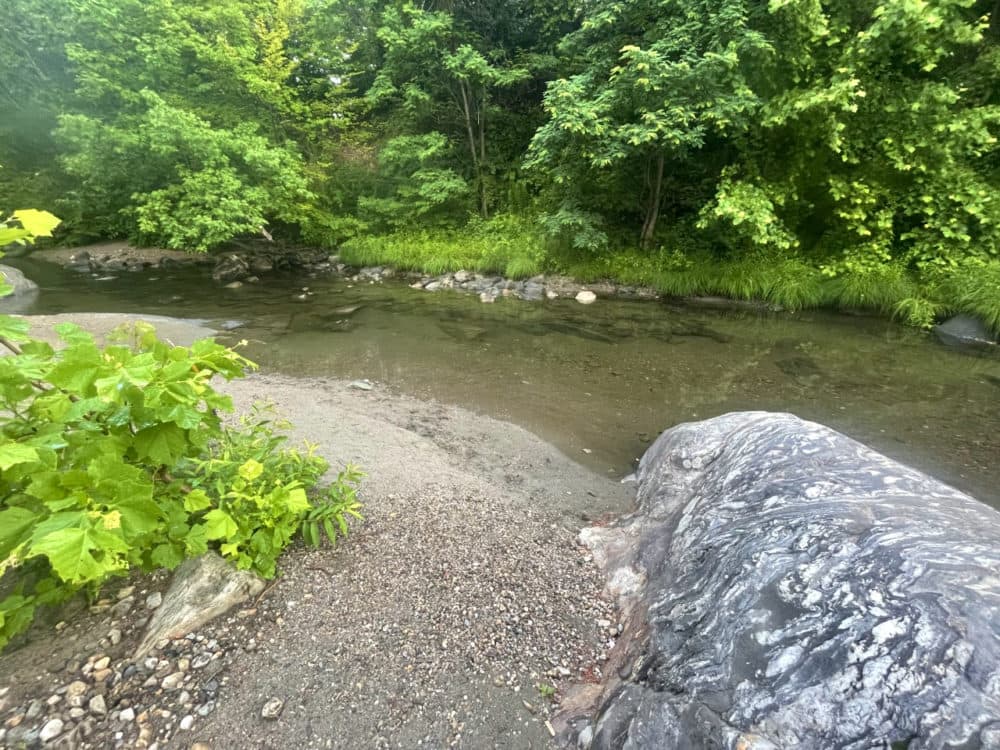Advertisement
All of Massachusetts is officially in a drought

The entire state of Massachusetts is in some level of drought, and with ongoing high temperatures and no meaningful rain on the horizon, the state says it’s time to start getting serious about water conservation.
Limiting indoor and outdoor water use “will allow local water supply systems and natural habitats to rebound more quickly, and will also ensure water resources are available for essential needs, such as drinking water and fire protection,” Energy and Environmental Affairs Secretary Bethany Card said in a statement.
As of now, no major drinking water supplies are at risk, though some private wells, along with many streams and rivers, are running low. The state also says that fire activity is up, particularly in the eastern part of the state where the drought is most acute.
Farmers are feeling the impact, too.
At a recent meeting of the state's Drought Management Task Force, a representative from the Department of Agriculture said some farmers in the northeast part of the state are already experiencing crop losses.
Massachusetts ranks drought severity on a scale of 0-4, with 0 being "normal" and 4 being an "emergency." The state is divided into seven regions, and each is assigned a level based on local rainfall data, ground water levels, stream flow and wildfire risk.
As of Thursday evening, the northeast and central regions are in a “Level 3 Critical Drought,” the southeast and Connecticut River Valley regions are in a “Level 2 Significant Drought,” and the western region along with Cape Cod and the Islands are in a “Level 1 Mild Drought.”
When you think about drought, you probably think about California and the southwest. But it’s not atypical for the Northeast to experience droughts in the summer — 2016 and 2020 both saw statewide drought conditions. And though the dry conditions usually only last for a few months, they can still have harmful effects on local ecosystems and water supplies, says Julia Blatt, Executive Director of the Massachusetts Rivers Alliance.
Lower water levels can harm wildlife like fish and turtles, and, when combined with higher temperatures, can cause toxic algae blooms and other noxious plants to proliferate.
“We're hearing that rivers are low. We're hearing that many tributaries are dry. We are hearing, in some cases, that people are seeing historic lows, which means the lowest flow or the driest river they've seen in decades,” she says.
Climate change is also probably making the situation worse, according to David Boutt, professor of hydrology at the University of Massachusetts. He says it's hard to say that climate change is driving the particular drought we’re in now, but if you look at data from the last few decades, the Northeast has experienced more summertime droughts in the last few years than is typical.
Advertisement
In general, climate change is exacerbating weather extremes — we see “wetter” wet periods and “drier” dry periods, he says. “And we seem to be really very sensitive to what I would consider fairly small shortages of precipitation.”
The Secretary of Energy and Environmental Affairs is in charge of declaring drought conditions, though the office has little ability to enforce water use restrictions, according to Blatt.
Her group is supporting legislation that would give the secretary authority to mandate restrictions during times of drought. With less than 10 days left in this legislative session, it seems unlikely that it will pass. But Blatt says they’ll file it again next session.
“In study after study, people always say they care about safe drinking water,” she says. “And these two things are very tightly connected — the health of your rivers and the sustainability of your water supply. You can't have one without the other. So people should be caring about [the drought] even if they're not ‘river people,’ " she says.
The state has released the following water use recommendations for residents and businesses. You can also check with your city or town for any other local water restriction policies.
Level 1 drought recommendations
- Limit outdoor watering to 1 day a week, and only water between 5 p.m. and 9 a.m. when less water will be lost to evaporation.
- Consider switching to more efficient toilets, faucets and showers that use less water.
Level 2 drought recommendations
- Limit outdoor watering and only use hand-held hoses or watering cans. Watering should be done between 5 p.m. and 9 a.m. to reduce the amount of water lost to evaporation.
- Minimize all indoor water use.
Level 3 drought recommendations
- Stop all non-essential outdoor watering
- Minimize all indoor water use.
The state's website has more information on how to conserve water indoors and outdoors.
